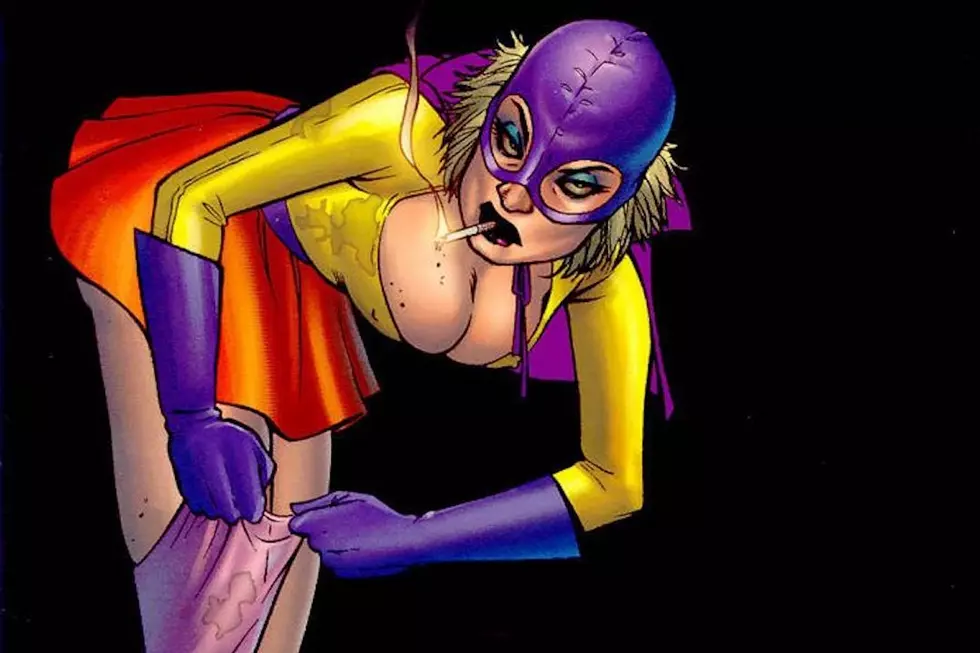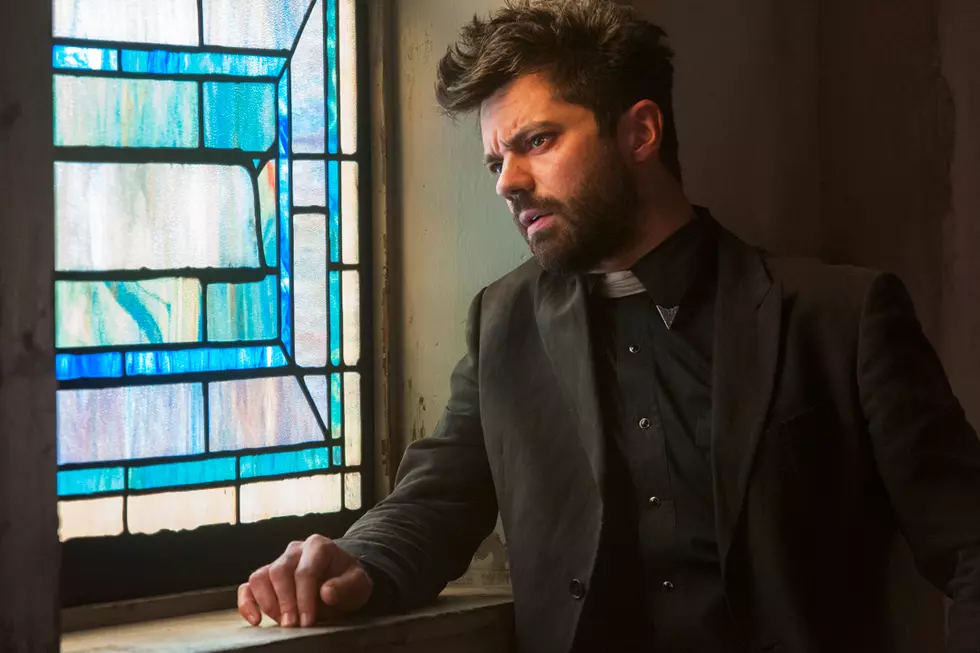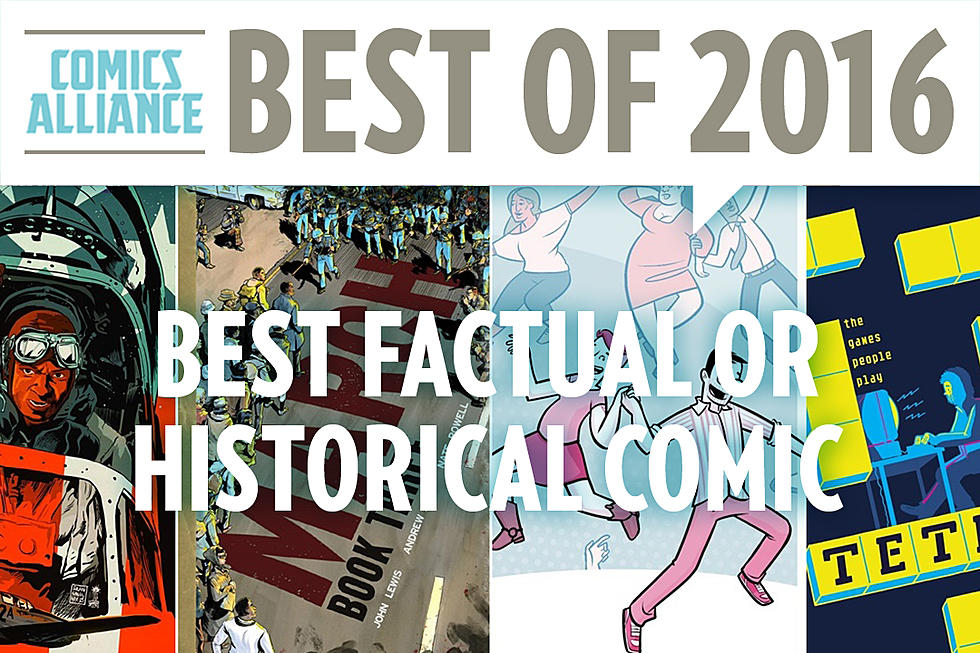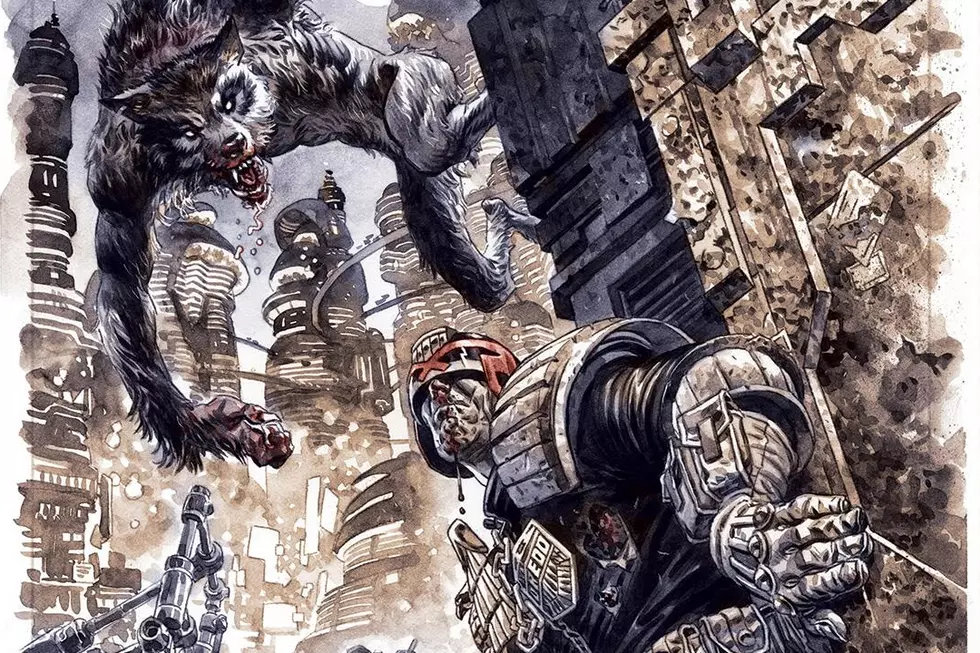
Ask Chris #204: Hitman, Batman, And Gotham City’s Worst Neighborhood
Q: I'm interested in Hitman as a character in the larger DCU, and "the area of Gotham so bad that Batman doesn't go there," because Batman is a dude that has paid multiple visits to a planet literally called Apokolips. -- @kingimpulse
A: For those of you who haven't been following the War Rocket Ajax podcast, Matt and I have been spending the entirety of 2014 ranking every single comic book story ever on a master list from the best (Amazing Spider-Man #33) to the worst (Identity Crisis). Last week, we finally got around to Hitman, and while it eventually fell between The Dark Knight Returns and Impulse #3, the conversation that we had about it involved me mentioning that Tommy Monaghan lived in a section of Gotham called "the Cauldron," which was so thoroughly lawless that they didn't even really notice when No Man's Land swept through.
There's a pretty obvious reason why it went down that way, of course, but the more I thought about your question, the more I realized that it's the core of Hitman's complicated relationship with the universe where it's set, which is one of the best things about that comic.
The easy answer is, of course, that it's a lot easier to sell a comic book published by DC if it has at least some slight connection to Batman. That's pretty much just a truism of comics sales -- for as much as superhero comics are built on doing something new and all the thrills that you get from fresh, exciting ideas, readers tend to only really want more of what they're already familiar with.
For proof of that, you don't need to look any further than the reactions that a certain segment of fandom had to recent announcements like Batgirl's new costume or the shake-ups in Thor and Captain America, but to be honest, I'm as guilty of that as anyone. I'm pretty narrowly focused on superheroes and perfectly happy to not stray too far away from them, and as much as I try to be open to new takes within that genre, my favorite stuff is probably always going to be the stuff I grew up with and spent a lot of time reading.
Of course, I have perfectly valid and well thought-out reasons for that, but, you know. Some other people might just be tied to the nostalgia of what they liked when they were kids.
Ahem.
Anyway, because of that, it seems natural that you'd want to have some connection to a character like Batman, who has fans that'll pick up literally any book with even a tenuous connection and a token appearance in the first arc -- which is exactly what Hitman was in that first arc. The thing is, that already sets up a really bizarre dynamic for where that book fits into the DC Universe.
See, Hitman is technically a spin-off title, it's just not a spinoff of a Batman book. Tommy Monaghan (and his short-lived bright red Kamen Rider scarf) first showed up in the pages of Garth Ennis and John McCrea's run on The Demon, during the 1993 Bloodlines crossover.
If you don't recall that one, it ran through all the Annuals that year, and the premise was that aliens invaded and injected parasites into a bunch of people that gave them super-powers. Why exactly aliens thought that creating more super-powered humans would be a good idea and not a surefire recipe for destruction, I'm not sure, but the basic idea was that each annual would introduce a new character who would then go on to bigger and better things.
As you may have noticed from the fact that we're not celebrating the twentieth anniversary of Razorsharp and the Psyba-Rats this year, it didn't actually work out so well. Out of 23 new characters introduced in the pages of Bloodlines, Hitman was the only real success -- and he didn't even get his own series until three years later. Really, the only other notable character to come out of that mess was Gunfire, who had the most 1993 possible super-power, the ability to turn anything into a gun, and even his series didn't last long. The others just sort of faded away.
But while Ennis and McCrea's Demon was a pretty solid comic -- there's a fantastic three-part Haunted Tank story in there that features Nazi zombies being slaughtered by the dozen, and it's the closest thing to concentrated Garth Ennis that I can think of -- it was obviously nowhere near as popular as Batman. And in fact, if I had to guess, I'd say that the launch of Hitman in '96 had a lot less to do with what Ennis and McCrea had done on The Demon and almost everything to do with something else that happened between 1993 and 1996: Preacher.
See, while Demon might not have been an overwhelming success, Preacher came out of the gate as hot as anything could, making Ennis and Steve Dillon one of the hottest teams in comics. And since Ennis and McCrea already worked well together and already had a character they'd created who was nominally a superhero, Hitman became a natural vehicle.
Incidentally, while I don't want to overshadow what Dillon and McCrea did on those books, it's a testament to Garth Ennis's skill in particular that Hitman, which I hold as his best work, overlaps with both Preacher and Punisher, which were done one right after the other. That's a pretty amazing resumé for anyone, but to have been doing two of those books at the same time? That's monumental.
Anyway, while the idea was clearly to capitalize on the success of Preacher, it seems to me that DC also wanted to shoot for an audience slightly larger than the folks picking up Preacher, or even The Demon, which was a book occupying a niche so bizarre that you could actually do a Haunted Tank story in the mid-90s and get away with it. So if I had to guess -- and I do, since that's kind of the point of the column -- I'd say that's why they went with setting Hitman in Gotham City's most terrible neighborhood.
And right from the start, that's actually a really weird choice. I mean, Hitman is a book about, well, a hitman. Tommy Monaghan kills people for money. He's a criminal, and even though he has enough of a moral code to make him a viable and likeable protagonist, that puts him in a weird position when you consider that he exists in a very specific setting that's defined by a dude who does nothing but punch out criminals and haul them to jail, and has done this at least twice a month for the past 75 years.
To their credit, Ennis and McCrea actually do address this and find a pretty viable workaround. For one thing, Batman shows up and is treated every bit as utterly, overwhelmingly capable of disposing of Tommy Monaghan as Batman fans would expect, to the point of literally uppercutting him out of the panel after Tommy, in one of those moments Wizard always loved so much, pukes on his shoes.
The problem is that Batman takes Tommy to the cops, and since Gotham's police force is legendarily and cartoonishly corrupt, they just drop Tommy off back at the bar so that he can go about his business. The thing is, while this seems like a one-note gag designed to close a loophole in the book's premise, it actually comes back years later, setting up an amazing moment in the JLA/Hitman crossover that Ennis and McCrea did as a sort of epilogue to the series. That's something that really speaks to one of the real strengths of the book, which is that everything matters. And it starts right there in the first issue with a dude barfing and then getting punched in the face. That's kind of Ennis and McCrea in a nutshell, really.
The other justification, and the one that I think is a beautiful little Occam's razor applied to superheroes, is that Batman has an awful lot of other stuff to worry about. I wasn't kidding about the issues set during No Man's Land where things don't actually change too much. While the rest of Gotham City was dealing with lawless anarchy in the wake of a massive earthquake, life just continued as normal in the Cauldron, with the exception of all the vampires showing up and causing trouble.
And really, despite Tommy and his cadre of friends being some of the most ruthless and efficient killers in the world, they're not quite the Joker, and the book sells that premise pretty well without ever making it look like there are criminals beneath Batman's notice.
Green Lantern, on the other hand, does not fare quite so well, but you have to expect that from a writer who did an interview saying that if you ever saw him writing Green Lantern, you know he'd gone broke because that's the only way he'd be desperate enough to take on a character that stupid, while he was writing a book for DC Comics. Thus, "Local Heroes," the story that's like six issues all about how much Green Lantern sucks.
The end result of all this is that you have Tommy Monaghan as a character who's separated from the larger superhero universe just enough so that the stories aren't quite shackled by being a part of the ongoing saga of what's happening in the Batman books -- although there are definitely really great tie-ins to larger stories like NML and Final Night -- but at the same time rooted just enough in a superhero universe, and specifically in the DC Universe, that it doesn't feel wrong when superhuman characters show up. Like, say, when Tommy and Nat have to get out of Gotham for a while and end up dealing with a pair of super-powered mercenaries while working as private soldiers.
Or in #34, where Ennis and McCrea tell the single best Superman story of the 1990s.
It's in that rare place where it certainly feels like it takes place in Gotham City, but doesn't feel like it's getting in the way of a Batman story. There's just enough there to make it work and to be ignored when it doesn't, and it's a testament to how great these creators are at building characters and settings that it works as well as it does. It's also notable that, since they left the book, no one else has even attempted to bring the Cauldron back into Gotham City.
Ask Chris art by Erica Henderson. If you’ve got a question you’d like to see Chris tackle in a future column, just send it to @theisb on Twitter with the hashtag #AskChris.
More From ComicsAlliance



![NECA Pits Aliens Against Batman, Turtles Against Terminators And More [Toy Fair 2017]](http://townsquare.media/site/622/files/2017/02/IMG_2656.jpg?w=980&q=75)





